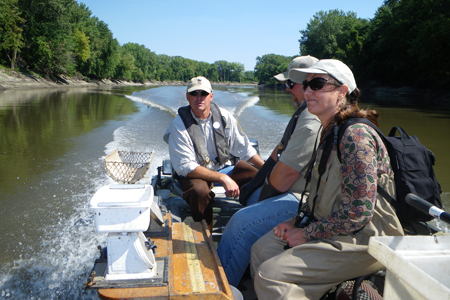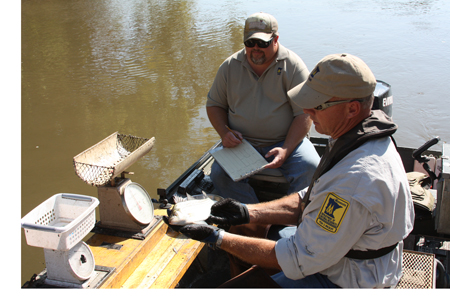Brad Koenen
Fisheries Technician, Minnesota Department of Natural Resources, Hutchinson Office
Based out of the Minnesota Department of Natural Resources Hutchinson office, Brad has worked as a Fisheries Technician for over 30 years and got into the field because of his extreme passion for hunting, fishing and the outdoor world in general. Brad’s duties cover a wide of responsibilities inventorying aquatic resources, assessing aquatic habitats, and resource exploitation by completing lake and stream surveys. In addition he conducts environmental reviews, fish propagation and distribution, along with making presentations to anglers, citizen groups, fairs, school groups and the general public.
Brad Koenen graduated from Brainerd Central Lakes College in 1977 and started his natural resource career with the DNR on the Department’s first Hotshot Firefighting Crew battling forest fires in Minnesota and on the West Coast. After spending two years in Illinois working on habitat and assessment projects he came back to the MN DNR to work first at Crystal Lakes Hatchery and finally to Hutchinson in 1983.
The highlight of Brad’s long fisheries career has to do with the Minnesota River and the largest flathead tagging studies done in North America. MN DNR captured over 4,000 flatheads and tagged 2,000 of them within in a 70 mile portion of the Minnesota River. According to Konan, this project and related efforts has generated five detailed reports on fish within the Minnesota River. “We now have unique underwater footage of wintering flathead catfish and ultimately annual, river wide, IBI sampling for all Minnesota River fish,” says Brad. “It is an undeniably fascinating, resource filled with daily discoveries of natural and historic wonders. Somehow, a day on the river never really seems like ‘work.’”
”Public awareness, public involvement, and ultimately public use will be the most important aspect of future protection and enhancement of not only the Minnesota River’s fishery but its corridor as a whole. The DNR’s role will be continued monitoring and developing population characteristics for the various fish species within the basin. That information should be used to generate interest in a largely unexploited, unique, and diverse fishery. As interest in that fishery develops the public will become the leader in promoting overall management of their interests thereby lending improvement and protection to the recreational resource base with the basin.”
See the Fish section for videos featuring Brad Koenen.
VIDEOS
How does fish shocking work? (4:32 minutes)
What are some significant characteristics of Minnesota River Basin fisheries? (4:25 minutes)



